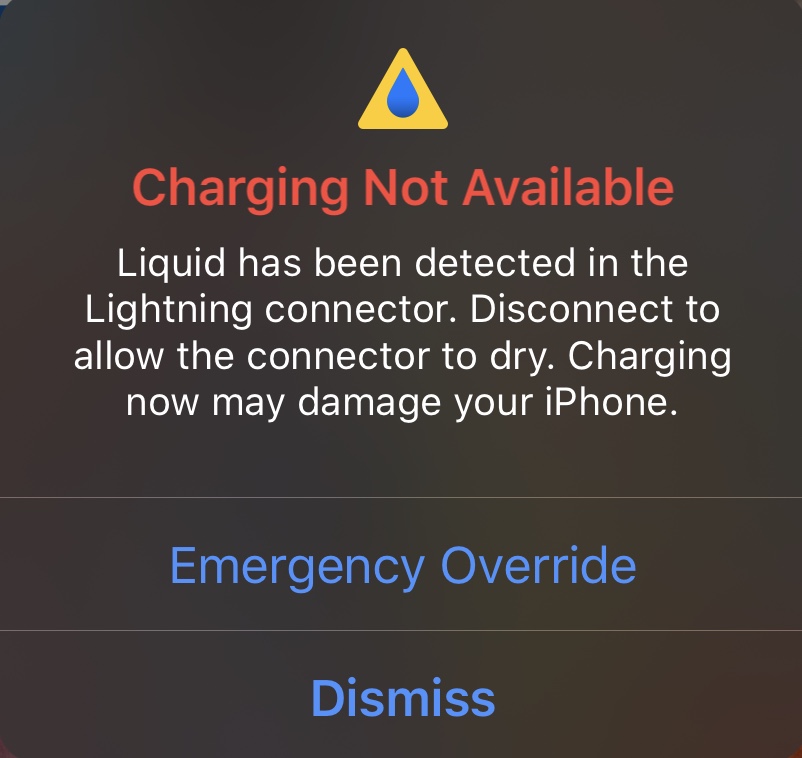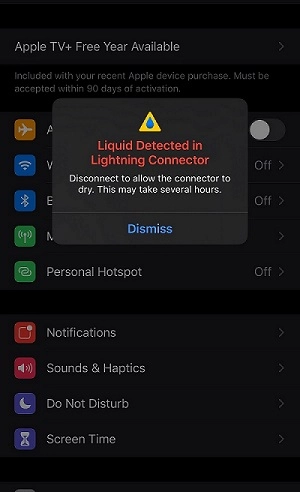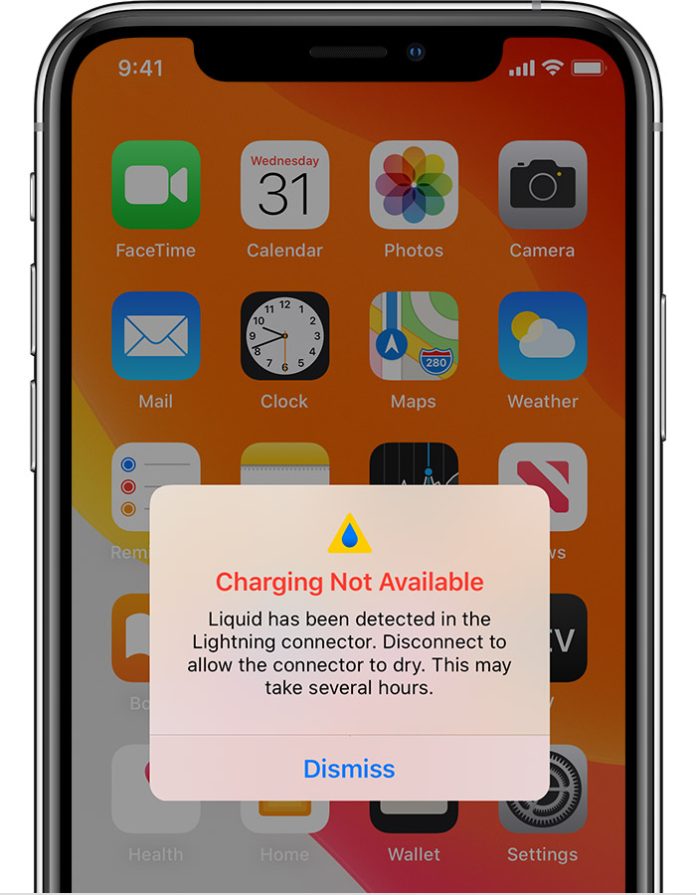You plug in the charger when you get your iPhone or iPad home. The dreaded message’ liquid detected in lightning connector’ appears. What do you do? This article tells you what exactly you have to do!
Everyone knows when you talk about electronic device problems; liquid damage is the worst and most frustrating problem to deal with. Each electronic device has some vulnerable parts that are more prone to moisture and water-related damage. And if you are an iPhone user, it’s the Lightning connector for you!
This small port is responsible for charging the device and connecting it to other devices, and it can easily become damaged by spills or exposure to moisture. In this blog, we’ll take a closer look at the problem of liquid damage to lightning connectors and discuss what you can do to prevent it, as well as what to do if you suspect that your device has been damaged.
Table of Contents
The Problem Of Liquid Damage To A Lightning Connector
A lightning connector is a type of connector used in many Apple products, such as iPhones, iPads, and iPods. This connector was a successor to the 30-pin dock connector on most iOS devices and was introduced with the iPhone 5 in 2012.

The lightning connector has eight pins and looks like a USB plug on one end and a smaller plug on the other end. The smaller plug fits into your iPad or iPhone, while the larger end fits into an AC power adapter or USB port to charge your device.
Aside from that, if a message appears in your iPhone while charging that says there is liquid damage to your lightning detector, it means it has detected moisture damage in that port. Liquid damage can cause corrosion inside the lightning connector and prevent it from working properly.
If you accidentally drop your iPhone in moisture, you should immediately remove any liquid from its case and contact Apple support for repairs as soon as possible. If you don’t do this quickly enough, there’s a chance that liquid damage will cause permanent damage to your device.
Causes Of iPhone’s Liquid Damage To its Lightning Connector
There are a number of ways that liquid can damage your iPhone’s lightning connector.

Liquid spills
If you accidentally drop something on your phone or tablet or if someone spills something on it while you’re eating out at a restaurant, you might end up with a liquid-damaged lightning connector. This type of damage can be fixed easily by taking your device to an authorized Apple store or by hiring an electronics repair service provider who specializes in liquid damage repairs for iPhone models. Moreover, If you try to turn on your phone after it has been wet, there’s a chance that you could get an electrical shock from the battery, and this could cause serious injury!
Exposure to rain
Exposing your iPhone to rainwater is another cause of liquid damage. Rainwater can leave behind minerals like salt and calcium that can corrode the metal inside your iPhone’s connector. This corrosion can cause permanent damage over time and may require replacing the lightning connector altogether.
Sweat
Another common cause of liquid damage to a lightning connector is exposure to sweat or sweat from another person who has been exercising with their iPhone before giving it back to them!
Symptoms Of Liquid Damage To Your Lightning Connector
Lightning connectors are delicate, and they can be damaged by liquids. If you’re experiencing problems with your charging port or dock connector, there are a few signs that can help you troubleshoot the problem.
Malfunctioning charging port
If your iPhone won’t charge when connected to its charger and the cable is properly inserted into the port, then liquid damage is likely to blame. This can happen because water can corrode the internal components of your iPhone’s charging port, causing it to malfunction.
Difficulty connecting to devices
If you’re having difficulty connecting your iPhone to other devices, such as speakers or headphones, this could be an indication of liquid damage. Water can cause corrosion on the internal components of your device’s connectors, which makes them less reliable than before and prone to failure during use.
Prevention Of Liquid Damage To Your Lightning Connector
Liquid damage to a lightning connector is a common problem for many people. If you have any version of an iPhone device like an iPad or Phone, there are many ways to prevent liquid damage to a lightning connector.
Keep devices away from liquids: If your Phone falls in the water, don’t try to turn it on or plug it in this could cause more damage. Instead, remove the battery and place the iPhone under sunlight or use the blower to dry it out from the inside completely.
Use a waterproof case or cover: If you plan on using your Phone in the rain or near water, consider investing in a waterproof case or cover that protects the ports and other openings on your device. This will help keep moisture away from internal components like the camera sensor and microphone.
Check your warranty policy: Check with the manufacturer of your device to see whether they offer any protection against liquid damage under warranty policies (most manufacturers do).
What To Do If The Liquid is Detected In The Lightning Connector
If you notice any of the above signs of moisture or water issues in your iPhone’s connectors, there are a few steps you can take to minimize future damage:
- The device should be immediately turned off if the liquid is detected in a lightning connector.
- The user should remove any remaining liquid and let the iPhone dry by itself completely.
- If there is no visible liquid damage, but you suspect it has been exposed to water or other liquids, then the device should not be used until Apple, or an authorized service provider has checked it.
Repair Options
There are several options available for repairing liquid-damaged lightning connectors:
Take it to a professional repair shop
If you’re planning to repair your iPhone yourself, it’s best to take it to a professional first. That way, you know that any damage done during the process is being done correctly and safely. This is especially important if you have no experience with electronics repair or don’t want to risk damaging your device further.
Use a DIY kit
You can buy kits containing all the tools and components needed to repair damaged lightning connectors. These kits often come with detailed instructions on successful repair, so they’re ideal for people who want to learn more about their devices and how they work.
Do-it-yourself (DIY)
Some people prefer not purchasing kits or taking their devices to professionals because they want a challenge or enjoy doing things themselves by learning how things work along the way. If you are one of those self-repair guys, then try performing the repairs yourself!
Also Read: Long Layered Hair Styles
Conclusion
The point of handling a damaged device is to do what you can to prolong its life. Hopefully, after the steps described above have been taken, you can use your iPhone normally for months and years. And hopefully, this information will help you protect your devices just a bit longer.
















